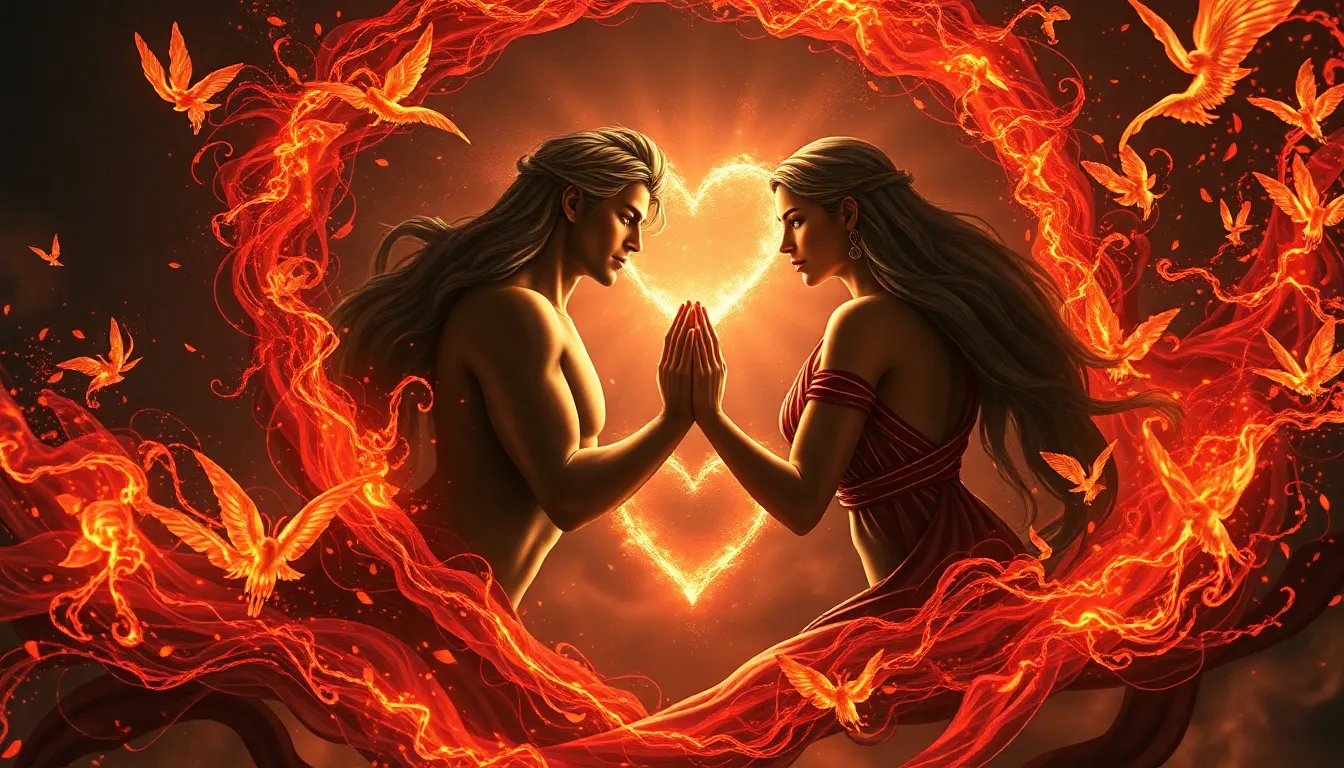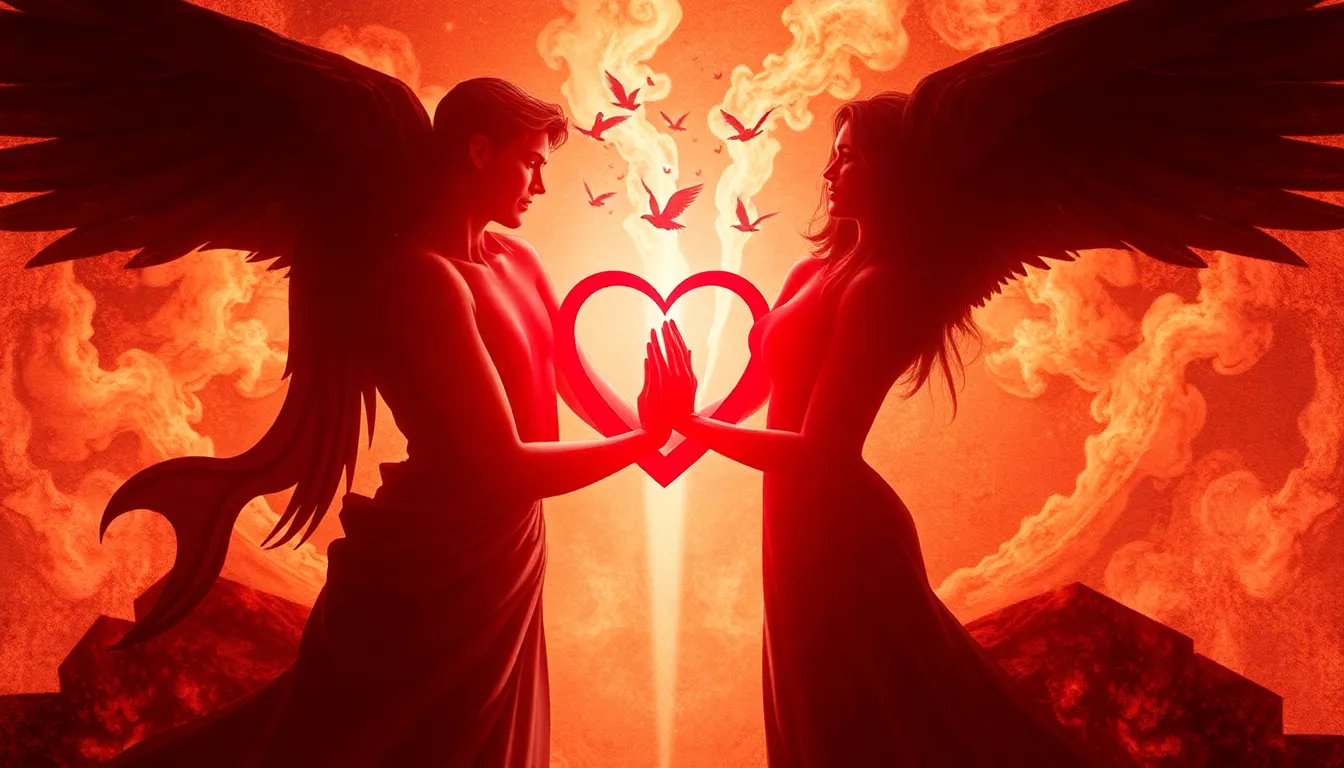Mythical Love Triangles: Drama and Passion in Ancient Lore
Introduction to Mythical Love Triangles
Love triangles have long been a compelling narrative device in mythology, presenting complex relationships involving three individuals intertwined in emotional entanglements. These triangles often serve to create tension, drama, and intrigue, reflecting the challenges of love and loyalty. They are pivotal in revealing the emotional depths of characters and the societal norms of the cultures from which these stories originate.
The Role of Love in Ancient Mythology
Love has been a central theme in ancient mythology, acting as a driving force behind many narratives. The exploration of love in these tales often encapsulates both the beauty and the turmoil that accompany human relationships. Love triangles, in particular, showcase a spectrum of emotions—passion, jealousy, betrayal, and sacrifice—mirroring the complexities of real human connections.
Prominent Examples of Love Triangles in Mythology
Throughout various cultures, notable love triangles have emerged that capture the imagination and resonate with audiences. Here are a few prominent examples:
- Helen of Troy, Paris, and Menelaus: This famous triangle ignited the Trojan War, highlighting themes of desire and betrayal.
- Eros, Psyche, and Aphrodite: A tale of love overcoming obstacles, where Psyche’s journey for love leads to trials set by Eros’s mother, Aphrodite.
- Freya, Odin, and Njord: In Norse mythology, Freya’s affections create tensions between powerful gods, showcasing the interplay of love and duty.
- Cupid, Psyche, and Venus: Another version of the Eros and Psyche story, demonstrating the struggle between divine expectations and human love.
The Psychological Dynamics of Love Triangles
The emotional conflicts and motivations present in love triangles provide a rich ground for psychological exploration. Characters are often driven by:
- Jealousy: The fear of losing a loved one can lead to destructive behaviors.
- Betrayal: When loyalties shift, the consequences can be catastrophic.
- Desire: The intense longing for another can cloud judgment and lead to impulsive actions.
These themes reflect not only the characters’ inner struggles but also the broader human experience of navigating complex relationships.
Cultural Variations: Love Triangles Across Different Civilizations
Love triangles are not confined to a single culture; they appear across Greek, Roman, Norse, and Eastern mythologies, each influenced by cultural contexts:
- Greek Mythology: Love triangles often involve gods and mortals, highlighting the conflict between divine will and human emotion.
- Roman Mythology: Similar to Greek tales, Roman narratives frequently explore themes of power and love, as seen in the stories surrounding Venus and Mars.
- Norse Mythology: Love triangles can reveal the harsh realities of fate and destiny, with characters often facing dire consequences.
- Eastern Mythology: In many Asian myths, love triangles may reflect societal expectations and familial loyalty, often leading to tragic outcomes.
The Consequences of Mythical Love Triangles
The repercussions of love triangles can be far-reaching, affecting not only the individuals involved but also their communities and civilizations. For instance:
- In the case of Helen of Troy, her choice led to the destruction of an entire city.
- Eros and Psyche’s trials led to the transformation of Psyche into a goddess, illustrating personal growth through adversity.
- In Norse tales, love conflicts might result in wars among gods or the downfall of heroes.
These narratives often serve as cautionary tales about the consequences of love and desire.
Symbolism and Allegory in Love Triangles
Beyond their dramatic surface, love triangles in mythology often symbolize deeper human experiences and moral lessons:
- Conflict: The struggle between duty and desire often mirrors real-life dilemmas.
- Transformation: Characters may undergo significant personal growth as a result of their experiences.
- Human Condition: These stories reflect the complexities of love, highlighting its joys and sorrows.
Modern Interpretations and Adaptations of Mythical Love Triangles
The influence of ancient love triangles extends into contemporary literature, film, and art. Modern retellings often draw upon these timeless themes, showcasing their relevance:
- Films like “Troy” and “The Last Temptation of Christ” reinterpret classic tales with new perspectives.
- Literature, such as Madeline Miller’s “Circe,” explores the nuances of love and betrayal in a modern context.
- Television series often incorporate love triangles, reflecting the enduring fascination with these complex dynamics.
Lessons Learned from Mythical Love Triangles
Audiences can glean valuable insights from these narratives, including:
- The importance of loyalty and trust in relationships.
- The complexity of human emotions and the consequences of our choices.
- Understanding that love can inspire both great triumphs and profound tragedies.
These lessons resonate with modern audiences, emphasizing the timeless nature of these stories.
Conclusion: The Enduring Legacy of Love Triangles in Mythology
Mythical love triangles encapsulate the drama and passion inherent in the human experience. Their enduring legacy in culture underscores the complexities of love, loyalty, and desire. As we continue to explore these ancient narratives, we uncover not only the trials of the characters involved but also reflections of our own lives and relationships. The stories of mythical love triangles remind us that love, in all its forms, remains a powerful and transformative force.



